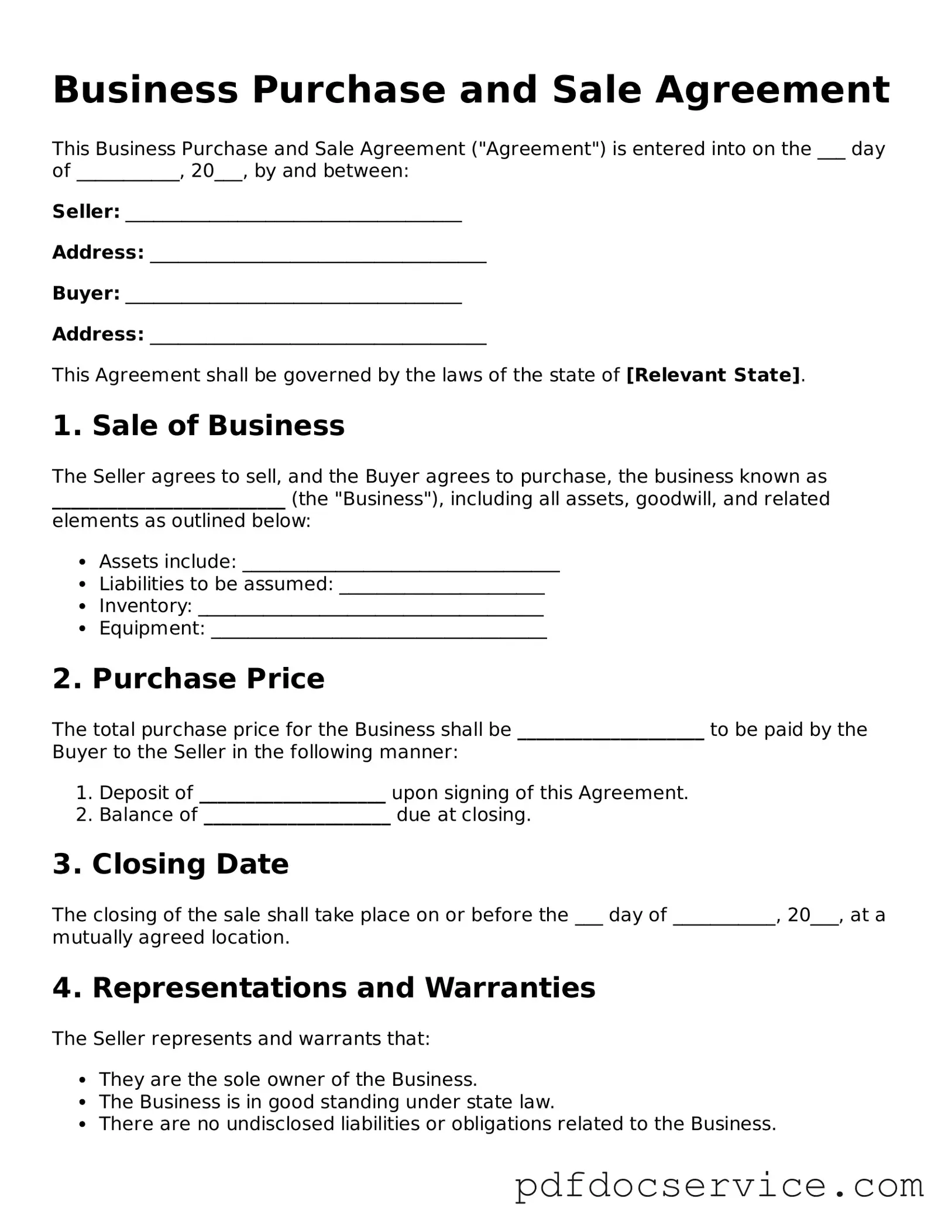Blank Business Purchase and Sale Agreement Form
A Business Purchase and Sale Agreement is a legal document that outlines the terms and conditions under which a business is bought or sold. This agreement serves as a blueprint for the transaction, detailing the responsibilities of both the buyer and the seller. Understanding its components is essential for ensuring a smooth transfer of ownership and protecting the interests of all parties involved.
Open Business Purchase and Sale Agreement Editor
